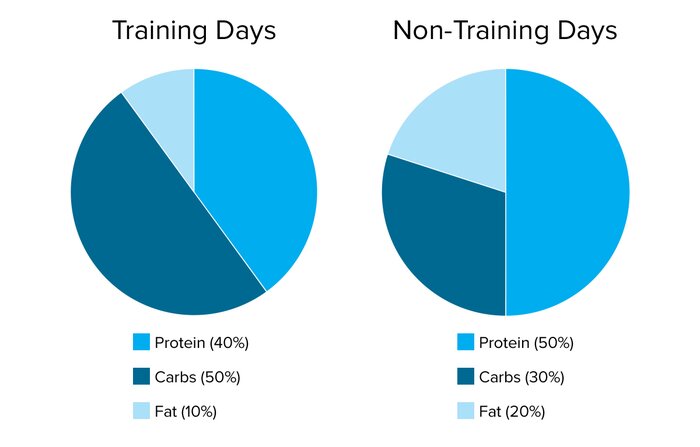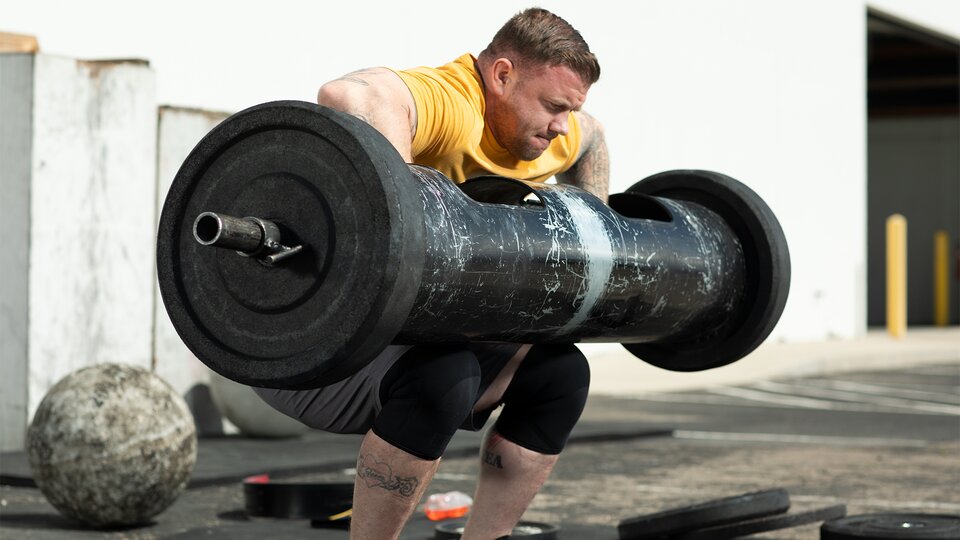What is Strongman? | Strongman in a Normal Gym | Nutrition for Strongman | Strongman for Bodybuilding | Bodybuilding for Strongman
Despite its name, strongman training isn’t just a sport focused on getting strong. It’s about getting better at pretty much every measurement of athleticism: explosive power, mental toughness, conditioning, and yes, strength. Hit strongman-style workouts without changing a single thing you eat, and you’ll most likely burn off some excess fat while also adding some quality lean muscle.
However, you can definitely tilt the scales in your favor based on how you eat, and add muscle while staying in your weight class. And no, it doesn’t involve copying those videos of world-class strongmen eating 10,000 calories per day! Here’s what you need to know to grow the right way.
Building Your Fuel Plan: The Rules
To grow while training like a strongman, you need to get comfortable with the idea that food is, most importantly, fuel for training and fuel for recovery. And fuel works best when it’s high quality.
No, this doesn’t mean you have to get out the food scale and start counting your macros, although you certainly can do that if it works for you (and if it does, you can find our recommended macros below). If you want rules rather than hard numbers, here are four to guide you:
-
Eat lots of quality food and as little sugar or junk food as possible.
-
Build each meal around a solid serving of a protein-rich food.
-
Drink lots of water and eat unlimited veggies with every meal, if possible.
-
Don’t try to cram everything into a single meal or two. Make healthy snacks your friend.
Looking for a little bit more specificity? If you count nothing else, having some basic knowledge of protein measurement can be the game-changer you’re seeking. Get to know what 30 grams of protein looks like in a number of staple foods, learn to eyeball it (it doesn’t have to be precise), and build each meal around protein-rich foods in the 30-gram range.
Then, spread those 30-ish gram blasts across enough meals to put you close to 1 gram of protein per pound of your body weight per day, which is the science-backed standard laid out for lifters and other athletes in Bodybuilding.com’s Foundations of Fitness Nutrition Course.
If you’re a 175-pound man, you can get close to it with three meals, 1-2 protein-rich snacks, and a post-workout protein shake. If you’re larger, another snack or shake can get you there.
Getting in 1 gram per pound of body weight of protein daily is easier, cheaper, and more comfortable with protein shakes. Case closed.
Building Your Fuel Plan: The Macros
If you’re someone who is comfortable counting macronutrients or calories, great! You can thrive on strongman using this approach, as well.
To start, use our macro calculator to determine your calories to start the plan. Input your information and select ”maintenance” under the nutrition goal section and ”lightly active” under activity level.
You may hesitate to eat at ”maintenance” calories if you’re looking to gain weight, but amazing things can happen at maintenance level, especially when you’re training hard and prioritizing quality food sources. Plus, this allows you to dial in the quality of your food before dialing up the quantity. Think of it this way: Once you know the right way to eat, you can always eat more!
Next, you’ll distribute these calories appropriately across the three major nutrients: carbohydrates, protein, and fat. A sub-optimal distribution may lead to poor performance and recovery, and it definitely won’t help you add muscle and strength.
Here’s the ratio favored by Anthony Fuhrman, pro strongman and creator of the popular BodyFit training plan Total-Package Strength with Anthony Fuhrman:

If you’re more of a ”just gimme the grams per body weight” lifter, here’s how Fuhrman likes to do it: 1.2 grams per pound of body weight of protein, 1.4 grams per pound of carbs on training days (half that on rest days), and 0.24 grams per pound of fats. Using this approach, rest days will automatically have fewer calories than training days.
If you’re new to macro counting and need guidance on how to turn those numbers into meals, check out the article “From Here to Macros: 4 Steps to Better Nutrition.”
For most people, this will be enough carbs to perform like a boss in the gym, enough protein to recover and add muscle, and enough fat to feel great. But because you’re cycling your carbs (higher on training days, lower on rest days) you can also stay leaner in the process.
Nutrient Timing for Strongman
If you scour the internet, you’ll find arguments for and against the importance of nutrient timing. Sure, it can help you bring out the very best in yourself and improve athletic performance, but not if it’s so complicated that you can’t follow it consistently for weeks or months at a time!
Fortunately, it doesn’t have to be complicated to be effective: Here’s how to build your day optimally for results:
Your First Meal of the Day: On a training day, don’t perform any workouts on an empty stomach. Workouts this intense need fuel in the tank! Have both carbs and protein in your first meal of the day.
Pre-Workout Meal: If you train in the morning, your breakfast can be your pre-workout meal. If you train later, eat a high-protein, high-carb, low-fat meal 2-3 hours before training, and perhaps even a light snack an hour or so before training. This is the approach I recommend in the article, “The Ultimate Guide to Leg Day Nutrition,” but it works for any intense, long-duration workout.
Post-Workout Fuel: If you really want to kick-start recovery, have a protein shake right after training, then a meal within the hour containing both protein and carbs to refuel your depleted glycogen reserves.
Once you have your meal plan nailed down, it’s time to turn your focus to what supplements you can take, and when, to get an edge. We’ve got you covered there, too, in the comprehensive guide, “8 Supplements for Strength Athletes and Bodybuilders” by Krissy Kendall, Ph.D.
